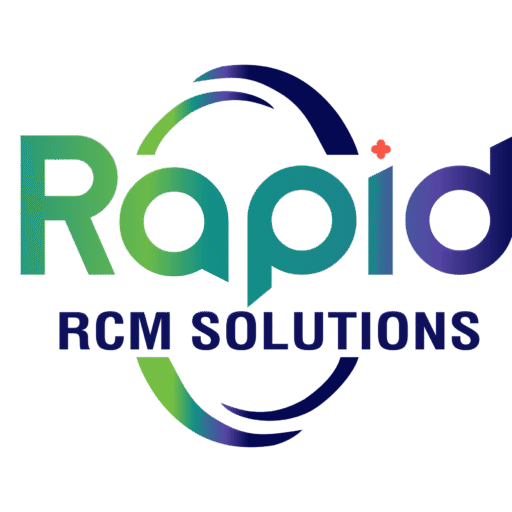No patient likes getting a surprise bill, and no doctor enjoys explaining one. Billing confusion has become one of the biggest reasons patients delay or avoid care. This is why a lot of U.S. practices are shifting towards patient billing tools, digital solutions that help streamline payment and give a better breakdown of costs, and that every dollar comprehensible.
These tools do not simply ease billing. They assist physicians in building trust, lessen the administrative pressure, and make sure the patients are always aware of what to expect.
So, it’s time to see how modern billing technology is changing financial communication between providers and patients.
How Patient Billing Tools are Promoting Transparency
1. Clear Cost Estimates Before the Visit
Patients today want to be informed about what they will pay even before they footstep into your clinic. Applications such as BuildMyBod Health can do that by displaying the initial cost estimates on your site.
Relate this to a“price transparency window.” Patients can browse services, see what procedures cost, and book appointments with confidence. The tool syncs with your office’s pricing, so estimates are accurate and consistent.
In the case of elective procedures or out-of-network services, such transparency decreases reluctance and creates trust. Patients will be less willing to delay treatment or challenge bills in the future when they understand upfront how much the care will cost them.
2. Automation That Takes the Pressure Off Your Staff
Paper-based billing communication consumes time and creates an opportunity to make errors. Such tools as SheerHealth can transform that.
SheerHealth automatically creates simple and easy-to-read cost breakdowns according to the insurance plan of a patient. It is also compatible with EHRs and billing systems, and thus, your staff will not have to compute or clarify every estimate manually.
Better yet, it fits within the No Surprises Act, where patients will receive clear, upfront information on what they will pay. It’s a win-win. Patients are informed, and your staff can regain time to work on patients rather than on documentation.
3. Public Tools That Encourage Informed Choices
Transparency doesn’t stop at your office door. Free platforms like Fair Health Consumer are helping patients across the country understand medical costs better.
Patients can compare in-network and out-of-network prices, estimate procedure costs by ZIP code, and even decode billing terms that often confuse them. The result? Patients come in more informed and less anxious about money.
For practices, that means smoother conversations and fewer billing disputes. When patients understand what’s on their bill, they’re far more likely to pay promptly and stay satisfied with your care.
4. Real-Time Billing for Hospitals and Larger Practices
For hospital systems and multi-specialty clinics, billing can get complicated fast. That’s where IPD automation platforms are changing the game.
These platforms record every service in real time as care is provided. Instead of receiving a confusing lump-sum bill weeks later, patients can see an itemized list of charges as they happen.
They can even track costs during their stay, just like tracking an order online. These systems also process insurance eligibility checks and claims automatically behind the scenes to minimize denials, disputes, and delays.
Transparency enhances loyalty and trust when patients perceive it in action. They are aware of what they are paying and why.
5. Transparency Is No Longer Optional in 2025
Technology has been overtaken by regulations. Hospitals and clinics must also indicate the “Estimated Allowed Amounts; the amount that patients actually pay after insurance adjustments.
This is a big change in the old system of charge master, where the prices listed did not always reflect reality. Compliance is no longer about evading penalties, but the fulfillment of patient expectations.
Physicians who adopt these tools earlier are already staying ahead of the curve. They are developing better relationships, increasing patient satisfaction rates, and not experiencing the pressure associated with non-compliance.
6. AI Is Quietly Making Billing Smarter
Artificial intelligence is not a medical buzzword. It is even simplifying billing. There are applications such as Aptarro and Athenahealth, which apply AI to identify mistakes in claims prior to their release.
They automatically correct their coding errors, identify missing data, and fulfill payer requirements for their claims. It implies fewer reimbursements and quicker reimbursements.
Another way that these systems enhance the patient payment experience is through automated notifications, flexible payment arrangements, and integration with digital wallets. It is more rapid for patients, sanitary for your staff, and advantageous to your cash flow.
When billing is a success, it is a win-win; patients feel loved, and your employees feel less exhausted.
7. Proactive Communication Changes Everything
It is not merely a matter of collecting money but of early expectations. Practices can now automatically send pre-visit estimates and post-visit summaries in place of a surprise bill sent after the fact.
This active communication establishes trust. Patients are no longer surprised, and your staff does not have to talk about outstanding payments awkwardly.
Most importantly, it changes the tone of the whole billing process. Patients no longer perceive billing as a problem; they perceive it as part of a transparent and trusting care experience.
8. From Payment Confusion to Payment Simplicity
The point of patient billing tools is simple which is to make paying not hard. Online portals, calculating costs instantly, and even plans to pay all, provide the flexibility that patients require.
Imagine being in a position to pay a medical bill just as one orders a coffee or a flight. That is the direction healthcare billing is taking.
In relation to practices, simple payments imply fewer balances missed, quicker collections, and more satisfied patients. It is not a matter of displacing human connection but rather displacing the rub that tends to come in its way.
The Right Billing Partner Makes It All Work
Naturally, the use of the new tools is only effective when it is integrated into your billing process. This is why most practices collaborate with professionals who know the technology and the revenue cycle aspect of the game.
Rapid RCM Solutions is among such partners. The company assists healthcare providers in the U.S. to efficiently handle billing and not compromise total transparency with patients.
AI-driven claim accuracy to automated patient statements and cost estimates, Rapid RCM sees your billing system run efficiently, and your patients are kept in the loop throughout.
In case you are interested in making payments simplified, less confusing, and more transparent than ever before, Rapid RCM Solutions would be a good place to start.





